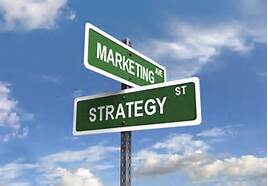
by Fronetics | Feb 9, 2015 | Blog, Logistics, Strategy, Supply Chain

Reducing paper in the distribution center is good for business (and trees).
Paper isn’t a thing of the past in workplaces, but it probably should be. The reasons go well beyond simply saving trees to an even more compelling argument: it’s just better business. A 2014 survey conducted by the Association for Information and Image Management (AIIM) found that more than half of responding businesses posited that the single largest way they could improve productivity would be to remove paper from their organizational processes.
The study’s implications for companies in the supply chain industry echo a 2005 Inbound Logistics article in which Leslie Hansen Harps wrote that the speed through the distribution center is critical. “Effective operations use best practices within the four walls of the facility — and beyond.” One of the best-practices discussed in the article: reducing reliance on paper. Specifically, the article referenced moving to hands-free solutions. Denny McKnight of Tompkins Associates Inc. told Harps: “People writing numbers on pads of paper or keying strings of numbers into a keyboard is a bad sign.”
Of the companies reporting superfluous paper use as an impediment to greater productivity in the 2014 AIIM study, less than 20% have paper-reducing policies in place. This finding highlights the fact that many companies have identified the need to reduce their use of paper, but most lack a clear vision for doing so. While the shift to a paper-free distribution center can seem overwhelming and cost prohibitive, small efforts to eliminate unnecessary paper can dramatically improve efficiencies. To start, consider the identification of one organizational process where it would make sense to introduce a paper-free method and spend an hour researching how other companies have transformed similar processes and which solutions have proved to be the most successful.
No doubt, as faster, more sophisticated technology couples with a more computer literate workforce, distribution centers will see an organic shift to a paper-less work environment. Including regular reviews of ways your company could implement paperless processes ensures paper doesn’t slow you down. After all, finding ways to eliminate paper is akin to finding gains in operational efficiency.
Here are 10 (more!) reasons why your company should tame its paper tiger:
- Increased inventory visibility
- Increased fulfillment accuracy
- Fewer lost sales
- Fewer out-of-stock situations
- Reduced search time
- Increased communication with customers
- Waste reduction
- Overhead cost cuts
- Document storage cost cuts
- A safer work environment
Has your company reduced its reliance on paper? If so, what benefits have you realized? If not, what barriers to the implementation of paperless processes have you experienced?

by Fronetics | Feb 9, 2015 | Blog, Logistics, Strategy, Supply Chain

Reducing paper in the distribution center is good for business (and trees).
Paper isn’t a thing of the past in workplaces, but it probably should be. The reasons go well beyond simply saving trees to an even more compelling argument: it’s just better business. A 2014 survey conducted by the Association for Information and Image Management (AIIM) found that more than half of responding businesses posited that the single largest way they could improve productivity would be to remove paper from their organizational processes.
The study’s implications for companies in the supply chain industry echo a 2005 Inbound Logistics article in which Leslie Hansen Harps wrote that the speed through the distribution center is critical. “Effective operations use best practices within the four walls of the facility — and beyond.” One of the best-practices discussed in the article: reducing reliance on paper. Specifically, the article referenced moving to hands-free solutions. Denny McKnight of Tompkins Associates Inc. told Harps: “People writing numbers on pads of paper or keying strings of numbers into a keyboard is a bad sign.”
Of the companies reporting superfluous paper use as an impediment to greater productivity in the 2014 AIIM study, less than 20% have paper-reducing policies in place. This finding highlights the fact that many companies have identified the need to reduce their use of paper, but most lack a clear vision for doing so. While the shift to a paper-free distribution center can seem overwhelming and cost prohibitive, small efforts to eliminate unnecessary paper can dramatically improve efficiencies. To start, consider the identification of one organizational process where it would make sense to introduce a paper-free method and spend an hour researching how other companies have transformed similar processes and which solutions have proved to be the most successful.
No doubt, as faster, more sophisticated technology couples with a more computer literate workforce, distribution centers will see an organic shift to a paper-less work environment. Including regular reviews of ways your company could implement paperless processes ensures paper doesn’t slow you down. After all, finding ways to eliminate paper is akin to finding gains in operational efficiency.
Here are 10 (more!) reasons why your company should tame its paper tiger:
- Increased inventory visibility
- Increased fulfillment accuracy
- Fewer lost sales
- Fewer out-of-stock situations
- Reduced search time
- Increased communication with customers
- Waste reduction
- Overhead cost cuts
- Document storage cost cuts
- A safer work environment
Has your company reduced its reliance on paper? If so, what benefits have you realized? If not, what barriers to the implementation of paperless processes have you experienced?

by Fronetics | Feb 5, 2015 | Blog, Logistics, Strategy, Supply Chain

Think inbound marketing isn’t for the supply chain and logistics industries? Guess again. Here are 5 reasons companies in the supply chain and logistics industries need inbound marketing.
Companies within the supply chain and logistics industries tend to disregard inbound marketing. The reason being they do not think inbound marketing will prove successful. The common objection is that prospects and customers for these industries are not online.
The reality, however, is that inbound marketing can be wildly successful for companies within the supply chain and logistics industries.
Here are five reasons why companies in these industries should use inbound marketing:
1. Customers are online.
B2B buyers are online. 93% of B2B buyers report that they use search engines to research purchase decisions. These buyers go online for a number of reasons including to:
- Learn about new market developments and industry practices;
- Discover new solutions to address a specific problem;
- Address a project or a program being undertaken by their company.
2. 60% of the sales process takes place before they engage your sales rep.
The average customer progresses nearly 60% of the way through the purchase decision-making process before engaging with a sales rep.
Before engaging with a sales rep, customers are turning to the internet and to social media for information. The 2014 UPS B2B Buyers Insight Study found that 68% percent of buyers research supply purchases via supplier website, and 52% use search engines.
3. You can present solutions to your prospects’ problems via social media and content.
When prospects go online they are looking for information and for answers. By creating valuable content and leveraging social media you can attract and engage prospects, and convert these prospects to customers.
4. Inbound marketing is more effective than traditional marketing.
Research conducted by HubSpot found that inbound marketing is more effective than outbound marketing:
- 200% average ROI;
- 62% lower cost head;
- 15% increase in top line revenue.
5. The proof is in the pudding.
Freight logistics company Cerasis decided to make the switch from outbound marketing to inbound marketing. Within 25 months the company gained 98 new customers and increased revenue by 14%.
Fronetics Strategic Advisors is a management consulting firm with a focus on inbound marketing. We create and execute successful strategies for growth and value creation. Unlike other firms, our approach is data driven. We know ROI is important, so we track and measure results to drive success. Read about our approach to inbound marketing, or get in touch.


by Fronetics | Feb 5, 2015 | Blog, Logistics, Strategy, Supply Chain

Think inbound marketing isn’t for the supply chain and logistics industries? Guess again. Here are 5 reasons companies in the supply chain and logistics industries need inbound marketing.
Companies within the supply chain and logistics industries tend to disregard inbound marketing. The reason being they do not think inbound marketing will prove successful. The common objection is that prospects and customers for these industries are not online.
The reality, however, is that inbound marketing can be wildly successful for companies within the supply chain and logistics industries.
Here are five reasons why companies in these industries should use inbound marketing:
1. Customers are online.
B2B buyers are online. 93% of B2B buyers report that they use search engines to research purchase decisions. These buyers go online for a number of reasons including to:
- Learn about new market developments and industry practices;
- Discover new solutions to address a specific problem;
- Address a project or a program being undertaken by their company.
2. 60% of the sales process takes place before they engage your sales rep.
The average customer progresses nearly 60% of the way through the purchase decision-making process before engaging with a sales rep.
Before engaging with a sales rep, customers are turning to the internet and to social media for information. The 2014 UPS B2B Buyers Insight Study found that 68% percent of buyers research supply purchases via supplier website, and 52% use search engines.
3. You can present solutions to your prospects’ problems via social media and content.
When prospects go online they are looking for information and for answers. By creating valuable content and leveraging social media you can attract and engage prospects, and convert these prospects to customers.
4. Inbound marketing is more effective than traditional marketing.
Research conducted by HubSpot found that inbound marketing is more effective than outbound marketing:
- 200% average ROI;
- 62% lower cost head;
- 15% increase in top line revenue.
5. The proof is in the pudding.
Freight logistics company Cerasis decided to make the switch from outbound marketing to inbound marketing. Within 25 months the company gained 98 new customers and increased revenue by 14%.
Fronetics Strategic Advisors is a management consulting firm with a focus on inbound marketing. We create and execute successful strategies for growth and value creation. Unlike other firms, our approach is data driven. We know ROI is important, so we track and measure results to drive success. Read about our approach to inbound marketing, or get in touch.


by Fronetics | Feb 4, 2015 | Blog, Data/Analytics, Marketing, Social Media, Strategy

Inbound marketing costs less than outbound marketing. And it works.
The internet has empowered customers. It has provided customers with new methods for finding and researching companies. It has also provided customers with new methods for finding, researching, and buying products.
The internet has changed marketing from a one way street to a two way street.
Customers no longer rely solely on TV/newspaper/magazine ads, billboards, direct mail, email, banner ads, and other traditional outbound marketing channels to learn about new products. These methods are now viewed as too intrusive, especially among younger consumers who regularly tune out the tactics.
Customers want to find YOU (not the other way around)
A study conducted by the Corporate Executive Board’s (CEB) Marketing Leadership Council found that the average customer progresses nearly 60 percent of the way through the purchase decision-making process before engaging with a sales rep. How are they able to do this? By going online. Customers are using websites, blogs, and social media.
A study by Pardot found that 72 percent of B2B buyers begin their research with Google. Other starting points for research: personal networks (15.58%), Yahoo (5.53%), Bing (2.76%), LinkedIn (2.51%) and social networks (2.01%).
What is inbound marketing?
Inbound marketing focuses on consumers finding you.
Inbound marketing meets your customers and prospects where they are, with the information for which they are looking, and at the right moment. Inbound marketing provides value, builds trust and authority, which ultimately result in increased leads and higher conversion rates.
The components of inbound marketing are pretty simple: Create and distribute fresh, relevant, targeted content specifically designed to reach a target audience.
Strategies include:
- Social media marketing
- Blogging and content marketing
- Podcasts
- White papers
- ebooks
- Infographics
- Search engine optimization (SEO)
- Case studies
What is outbound marketing?
In contrast, outbound marketing focuses on paying to broadcast your message to find consumers who will listen to you.
Outbound marketing is a value-driven numbers game. The more banner ads, print ads, and direct mailings you pay for, the more people see your product, and the more sales you’ll make. However, it is costly. Outbound marketing costs 38% more than inbound marketing. The average cost per lead using outbound marketing is $373. The average cost per lead using inbound marketing is $143.
Outbound marketing strategies include:
- Print ads
- TV ads
- Banner ads
- Telemarketing
- Cold calling
- Press releases
- Trade shows
- Email marketing
- Direct mail
Inbound marketing makes sense
Inbound marketing just makes sense. It is a proven methodology and it costs less. Isn’t it time to meet your customers where they are? Get online. Create content. Distribute content. Engage with customers. Optimize your website.
Fronetics Strategic Advisors is a management consulting firm focused on strategy and inbound marketing. When it comes to inbound marketing we take a different approach than other firms. This is because of our business experience and background. We know ROI is important, so our approach is data driven and produces results.
We understand that developing and implementing an inbound marketing strategy can seem daunting. We are here to help. We are happy to take a few minutes and look at your current strategy and give you ideas on how to start, or suggestions on what you can do to make your current strategy more successful. We are also happy to talk with you about what we can do.
We’d love to talk with you about how you can grow your business through inbound marketing.


by Fronetics | Feb 4, 2015 | Blog, Data/Analytics, Marketing, Social Media, Strategy

Inbound marketing costs less than outbound marketing. And it works.
The internet has empowered customers. It has provided customers with new methods for finding and researching companies. It has also provided customers with new methods for finding, researching, and buying products.
The internet has changed marketing from a one way street to a two way street.
Customers no longer rely solely on TV/newspaper/magazine ads, billboards, direct mail, email, banner ads, and other traditional outbound marketing channels to learn about new products. These methods are now viewed as too intrusive, especially among younger consumers who regularly tune out the tactics.
Customers want to find YOU (not the other way around)
A study conducted by the Corporate Executive Board’s (CEB) Marketing Leadership Council found that the average customer progresses nearly 60 percent of the way through the purchase decision-making process before engaging with a sales rep. How are they able to do this? By going online. Customers are using websites, blogs, and social media.
A study by Pardot found that 72 percent of B2B buyers begin their research with Google. Other starting points for research: personal networks (15.58%), Yahoo (5.53%), Bing (2.76%), LinkedIn (2.51%) and social networks (2.01%).
What is inbound marketing?
Inbound marketing focuses on consumers finding you.
Inbound marketing meets your customers and prospects where they are, with the information for which they are looking, and at the right moment. Inbound marketing provides value, builds trust and authority, which ultimately result in increased leads and higher conversion rates.
The components of inbound marketing are pretty simple: Create and distribute fresh, relevant, targeted content specifically designed to reach a target audience.
Strategies include:
- Social media marketing
- Blogging and content marketing
- Podcasts
- White papers
- ebooks
- Infographics
- Search engine optimization (SEO)
- Case studies
What is outbound marketing?
In contrast, outbound marketing focuses on paying to broadcast your message to find consumers who will listen to you.
Outbound marketing is a value-driven numbers game. The more banner ads, print ads, and direct mailings you pay for, the more people see your product, and the more sales you’ll make. However, it is costly. Outbound marketing costs 38% more than inbound marketing. The average cost per lead using outbound marketing is $373. The average cost per lead using inbound marketing is $143.
Outbound marketing strategies include:
- Print ads
- TV ads
- Banner ads
- Telemarketing
- Cold calling
- Press releases
- Trade shows
- Email marketing
- Direct mail
Inbound marketing makes sense
Inbound marketing just makes sense. It is a proven methodology and it costs less. Isn’t it time to meet your customers where they are? Get online. Create content. Distribute content. Engage with customers. Optimize your website.
Fronetics Strategic Advisors is a management consulting firm focused on strategy and inbound marketing. When it comes to inbound marketing we take a different approach than other firms. This is because of our business experience and background. We know ROI is important, so our approach is data driven and produces results.
We understand that developing and implementing an inbound marketing strategy can seem daunting. We are here to help. We are happy to take a few minutes and look at your current strategy and give you ideas on how to start, or suggestions on what you can do to make your current strategy more successful. We are also happy to talk with you about what we can do.
We’d love to talk with you about how you can grow your business through inbound marketing.








